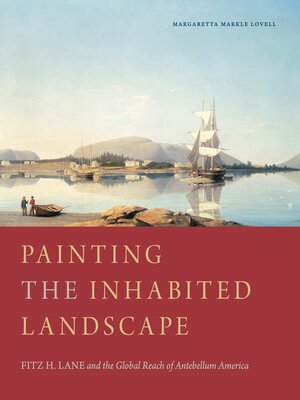Painting the Inhabited Landscape
ebook ∣ Fitz H. Lane and the Global Reach of Antebellum America
By Margaretta M. Lovell

Sign up to save your library
With an OverDrive account, you can save your favorite libraries for at-a-glance information about availability. Find out more about OverDrive accounts.
Find this title in Libby, the library reading app by OverDrive.



Search for a digital library with this title
Title found at these libraries:
| Library Name | Distance |
|---|---|
| Loading... |
The impulse in much nineteenth-century American painting and culture was to describe nature as a wilderness on which the young nation might freely inscribe its future: the United States as a virgin land, that is, unploughed, unfenced, and unpainted. Insofar as it exhibited evidence of a past, its traces pointed to a geologic or cosmic past, not a human one. The work of the New England artist Fitz H. Lane, however, was decidedly different.
In this important study, Margaretta Markle Lovell singles out the more modestly scaled, explicitly inhabited landscapes of Fitz H. Lane and investigates the patrons who supported his career, with an eye to understanding how New Englanders thought about their land, their economy, their history, and their links with widely disparate global communities. Lane's works depict nature as productive and allied in partnership with humans to create a sustainable, balanced political economy. What emerges from this close look at Lane's New England is a picture not of a "virgin wilderness" but of a land deeply resonant with its former uses—and a human history that incorporates, rather than excludes, Native Americans as shapers of land and as agents in that history.
Calling attention to unexplored dimensions of nineteenth-century painting, Painting the Inhabited Landscape is a major intervention in the scholarship on American art of the period, examining how that body of work commented on American culture and informs our understanding of canon formation.







